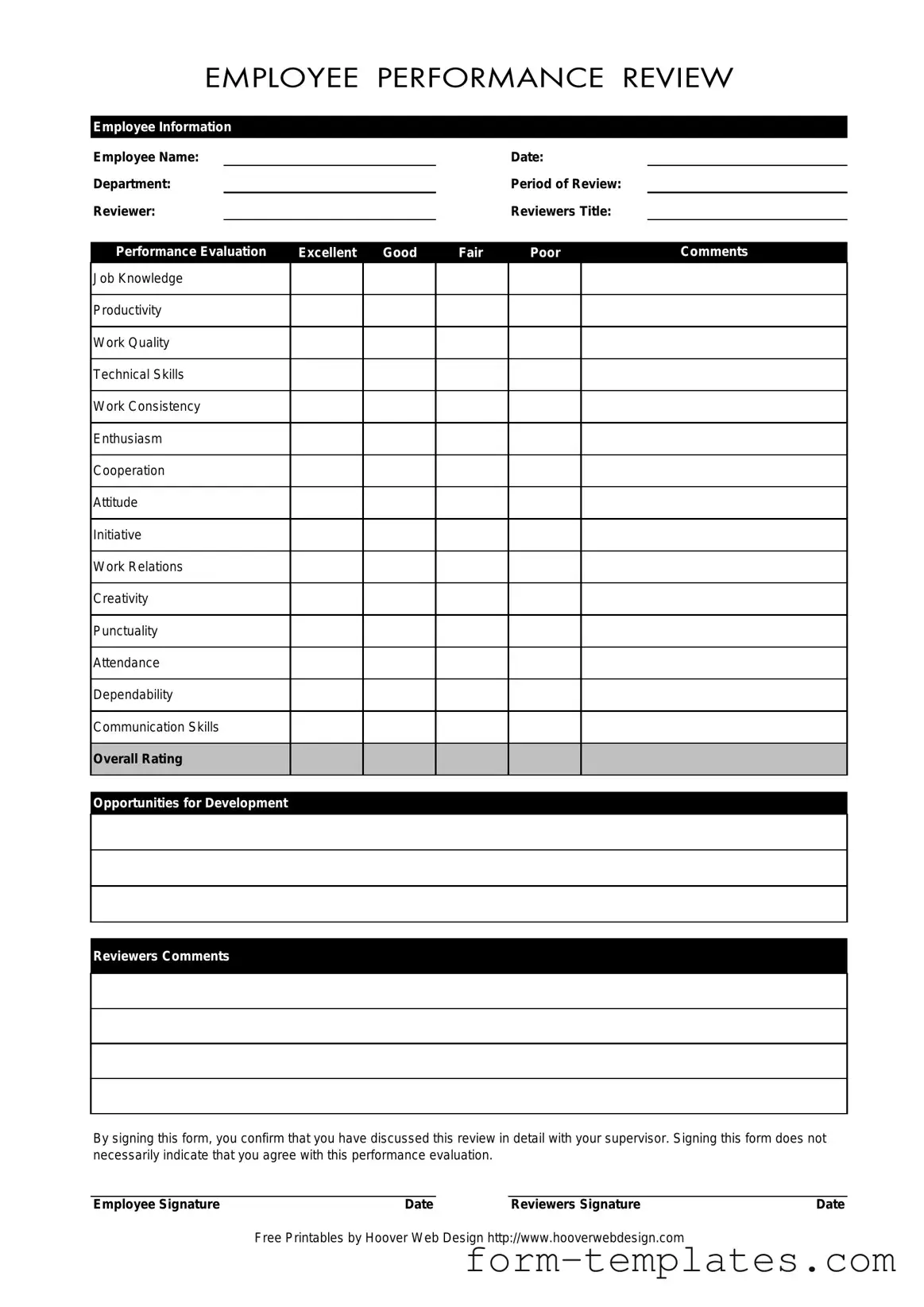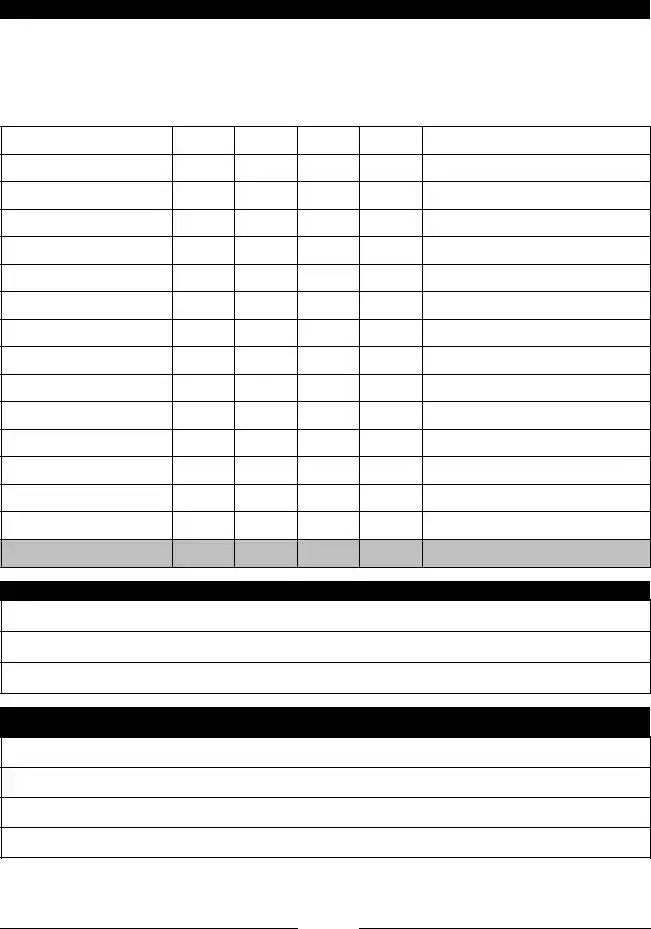The Employee form serves as a structured way to evaluate an employee's performance over a specific review period. It allows supervisors to assess various aspects of an employee's work, including job knowledge, productivity, and communication skills. By documenting these evaluations, the form helps ensure that feedback is clear and actionable, fostering professional growth and development.
The Employee form requires several key pieces of information:
-
Employee Name
-
Date of the evaluation
-
Department where the employee works
-
Period of review
-
Reviewer’s name and title
Additionally, the form includes sections for performance ratings in various categories, comments from both the reviewer and the employee, and signatures to confirm that the evaluation has been discussed.
Performance ratings on the Employee form are typically determined through a combination of objective metrics and subjective observations. Reviewers assess the employee’s performance in categories such as job knowledge, work quality, and cooperation. Each category is rated on a scale from excellent to poor, allowing for a nuanced understanding of the employee's strengths and areas for improvement. The comments section provides an opportunity for reviewers to elaborate on their ratings, offering specific examples to support their assessments.
If an employee disagrees with their performance evaluation, they should first discuss their concerns with their supervisor. Open communication can often resolve misunderstandings. The Employee form includes a section for comments, where the employee can express their perspective on the evaluation. It’s important to approach this conversation constructively, focusing on specific points of disagreement and seeking clarity on the reviewer’s perspective.
By signing the Employee form, the employee acknowledges that they have discussed the performance evaluation in detail with their supervisor. However, it’s crucial to note that signing does not necessarily mean the employee agrees with the evaluation. It simply confirms that the discussion took place. This distinction is important, as it allows for a record of the evaluation process while still respecting the employee’s right to disagree.

